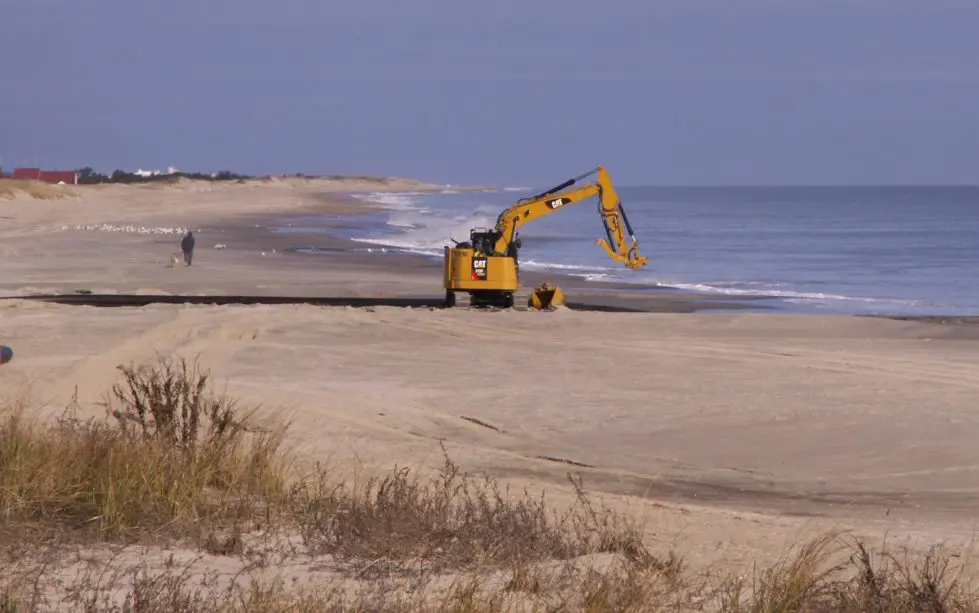

This DNREC file photo shows beach sand being replenished. The state wants local governments to help share the cost of that.
With beach replenishment expected to be needed more often and rising costs of providing it, DNREC is developing recommendations for local governments to help pay for it.
Right now the cost is paid by the state and federal government.
“Nothing we’re doing with this study is going to affect current projects or future planned projects,” said Jesse Hayden, environmental program director for DNREC, during a virtual public forum Thursday. “We are simply trying to get ahead of the problem while we have the opportunity before we actually run out of money and can’t can’t fund a project.”
The study also will try to determine the benefits of beach nourishment.
Delaware has spent around $68 million with another $142 million contributed by the federal government through the U.S. Army Corps of Engineers on beach nourishment projects since the 1950s.
As climate change accelerates erosion, beach replenishment – usually involving digging up sand that’s further offshore – to rebuild beaches and protect roads, bridges and buildings may need to be repeated more frequently.
Hayden said Thursday night during the public meeting that costs are rising because of fuel prices and contractor fees.
Delaware now pays for replenishment projects with 1% of the state lodging tax. DNREC expects to spend $4.1 million for fiscal year 2024, which ends June 30.
Additional state funding is provided by bond bill appropriations, with $3.5 million expected this year.
The replenishment study is the first step in exploring the concept of a local cost share.
“Intuitively, that seems like a fair proposal but nothing is changing right now,” Hayden said. “There is no timeline for implementing or asking for local cost share.”
Replenishment report
A draft report is anticipated to be ready in the spring, with a final report by the end of summer sent to department leadership, It then will be discussed with state legislators.
The meeting did not allow for public comment, but people were allowed to post questions in the chat box.
Hayden and Maura Flight of Industrial Economics Inc.,tried to answer them all, lumping some together.
Word of the projected change comes as US Wind – which wants to bring a power cable ashore from ocean wind turbines through Delaware Seashore State Park – has approached beach towns with promises of $20 million paid over 10 years.
RELATED STORY: State starts negotiations to bring wind farm cable ashore in state park
It offered the donations to seven towns.
The last question that Hayden and Flight answered was whether the proposed wind farms have any impact on the beach replenishment that will be included in the model.
The three consultants onscreen glanced at each other, their demeanor changed, and they smiled slightly, as if acknowledging, “Here we go.”
They said they were not related, and the meeting ended shortly after.
For more information about the survey, go here.
Share this Post



